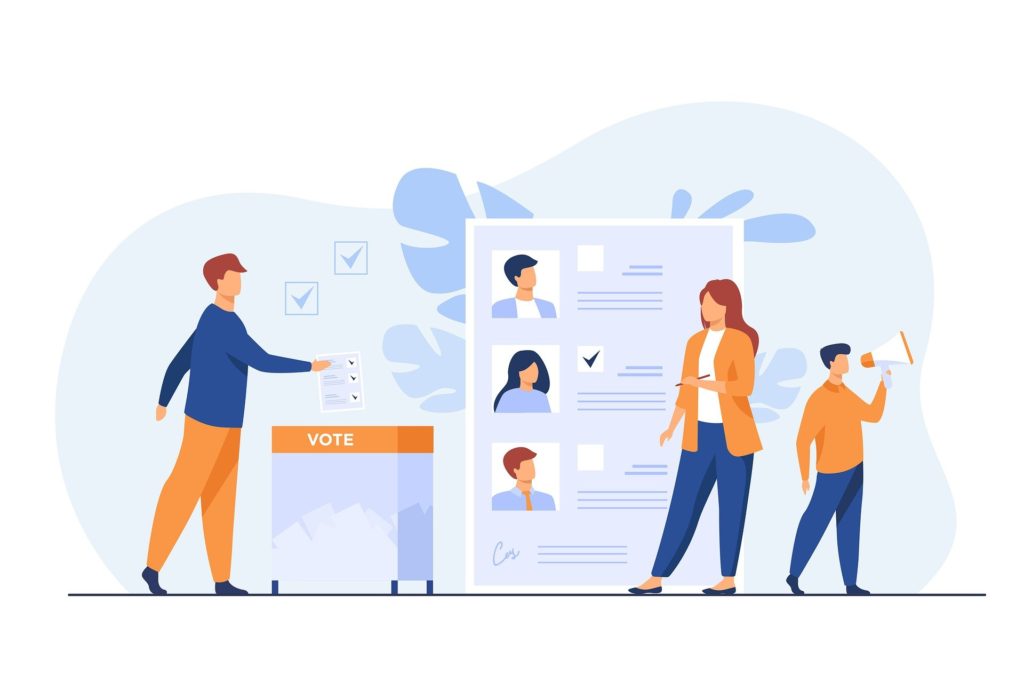
Our phones have become an essential part of our everyday lives, enhancing our ability to expeditiously feed ourselves, making transportation more efficient, and facilitating new forms of communication with folks on all corners of the globe. Now, our smartphones can also be used to provide transparent, validated, and contextual data analysis on our electoral process.
The nonprofit Center for New Data launched this week, and its Observing Democracy project is seeking to understand how far people travel to vote and how long they wait in line. It is turning to AI-fueled data synthesis derived from smartphone geolocation to provide answers. “The Observing Democracy Project provides a credible and comprehensive record of the upcoming November 3rd election, leveraging pseudonynomous geolocation data and a proprietary platform to document and analyze Election Day activity around polling stations,” the website reads.
Describing the project as ‘a novel and historic data initiative to strengthen American democracy,’ the Center for New Data notes that it is non-partisan and has no agenda beyond providing objective data and insights to the public and vetted civic partners. The Observing Democracy project was started because the Center believes that access to voting is inconsistent in the U.S., and that data sets can be used to rapidly show where (and why) those disparities exist on a granular level.
Jamie Daves is a founder of the Center for New Data. The media pioneer has been working for months on the new bootstrapped organization and is now pushing to scale it beyond its initial launch. “We need the tools of the Information Age to be used for democracy, freedom and the common good,” Daves says. “We are using mobile data to track wait times and safety in real-time at polling sites around the country. This will be used by journalists, researchers, policy-makers and others to ensure that elections were run fairly and securely. The data will be available for immediate reporting and legal challenges in the coming days and for future policy development.”
Data partners in the Observing Democracy project are X-Mode and Veraset, L2 Political and the Center for Public Integrity. The website states that geolocation, demographic, and voting data will be analyzed to help researchers, media, and academics better understand voting access across the country. It notes that Observing Democracy does not collect new data. Instead, the data being acquired and analyzed by the organizations is from from third-parties, and is publicly or commercially available. Such data is currently used to ‘power apps and experiences that consumers use everyday, like food delivery and mapping services.’
The website also states that the Center for New Data will make the information it collates available to media partners and academic collaborators in the days and weeks after election day. It notes it will take time to provide reports that are comprehensive in nature and have real value. The Observing Democracy cautions however that it is partisan, and does not partner with campaigns or political parties. “Identifying measures to improve access to the polls was one of the recent recommendation areas of the bipartisan Presidential Commission on Election Administration,” the entity notes on its website. “As a nonprofit organization focused on lowering the barrier to entry for high-quality research, it’s vital that partisan agendas do not play a role in the outputs of our work.”
Additionally, it is vital to the Observing Democracy project that data is anonymized. “Raw device data provides the greatest opportunity as a researcher, but [the] greatest privacy risk,” Steven Davenport, co-executive director of the project told Fast Company. “All incoming data is de-identified, and we have policies against reidentifying it. The protections we have against that include having as few people as possible working directly on the data.”
One of the Center for New Data’s partners, X-Mode, told Fast Company that it obfuscates device user IDs and generalizes the devices via aggregation to make its data pseudonymous. Anonymity is a key focus to ensure that the data leads to productive, rather than harmful, outcomes. “Our organization was founded to take commercial data, enhance its privacy protections and security protections, and wrap it in a fabric of prestigious, nonpartisan uses for research and documenting history,” Davenport says.
The Center for New Data is also working on policy research that drives social impact through the COVID Alliance, a project committed to response efforts for the pandemic. The organization states it aims to bring together cutting-edge technology and partnerships to open doors for ethical public problem-solving.
Artificial Intelligence is being implemented in industries all over the world and is a central theme of the research undertaken at UCIPT. Our work in the HOPE study is using data to assess and shift behavioral outcomes among HIV and other populations.
